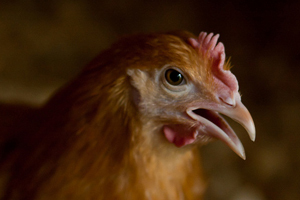Research: Effect of fat source and vitamin addition on layer performance

Iranian researchers investigated the influence of source of fat and supplementation of the diet with vitamin E and C on performance and egg quality of laying hens from forty four to fifty six weeks of age.
Two experiments (Exp.) were conducted to determine the apparent metabolizable energy (AME) content of refined soybean oil (SO), recycled soybean oil (RSO) and acidulated soybean oil soapstock (ASO) and the effects of inclusion of vitamin E and C in diets containing 35 g/kg of these oils on performance and egg quality of Hy-Line W-36 hens from 44 to 56 weeks of age.
In Exp. 1, the AME of the three oils was estimated in adult cockerels (n = 6) either by multiplying the digestibility of the oil by its gross energy value or by difference between the AME values of the basal diet and that of a diet that included 50 g/kg of the oil.
The estimated AME of the SO, RSO and ASO oils were 37.32, 37.13 and 32.85 MJ/kg when measured directly from oil digestibility coefficients and 38.19, 37.44 and 33.33 MJ/kg when calculated by difference, respectively.
In Exp. 2, there were 12 dietary treatments arranged factorially with three oil sources, two levels of supplemental vitamin E (10 vs. 250 IU/kg) and two levels of supplemental vitamin C (0 vs. 250 mg/kg).
Each diet was replicated five times and the experimental unit was a cage with five hens.
Results
Diet did not affect laying hen performance or egg quality traits in any of the periods considered.
Conclusion
It is concluded that when well processed, recycled soy oil and acidulated soy oil soapstock are good alternatives to refined soybean oil in diets for laying hens.
Under the conditions of this research, the supplementation of the diet with extra amounts of vitamin E and C to increase egg production or egg quality was not justified.
In Exp. 1, the AME of the three oils was estimated in adult cockerels (n = 6) either by multiplying the digestibility of the oil by its gross energy value or by difference between the AME values of the basal diet and that of a diet that included 50 g/kg of the oil.
The estimated AME of the SO, RSO and ASO oils were 37.32, 37.13 and 32.85 MJ/kg when measured directly from oil digestibility coefficients and 38.19, 37.44 and 33.33 MJ/kg when calculated by difference, respectively.
In Exp. 2, there were 12 dietary treatments arranged factorially with three oil sources, two levels of supplemental vitamin E (10 vs. 250 IU/kg) and two levels of supplemental vitamin C (0 vs. 250 mg/kg).
Each diet was replicated five times and the experimental unit was a cage with five hens.
Results
Diet did not affect laying hen performance or egg quality traits in any of the periods considered.
Conclusion
It is concluded that when well processed, recycled soy oil and acidulated soy oil soapstock are good alternatives to refined soybean oil in diets for laying hens.
Under the conditions of this research, the supplementation of the diet with extra amounts of vitamin E and C to increase egg production or egg quality was not justified.













